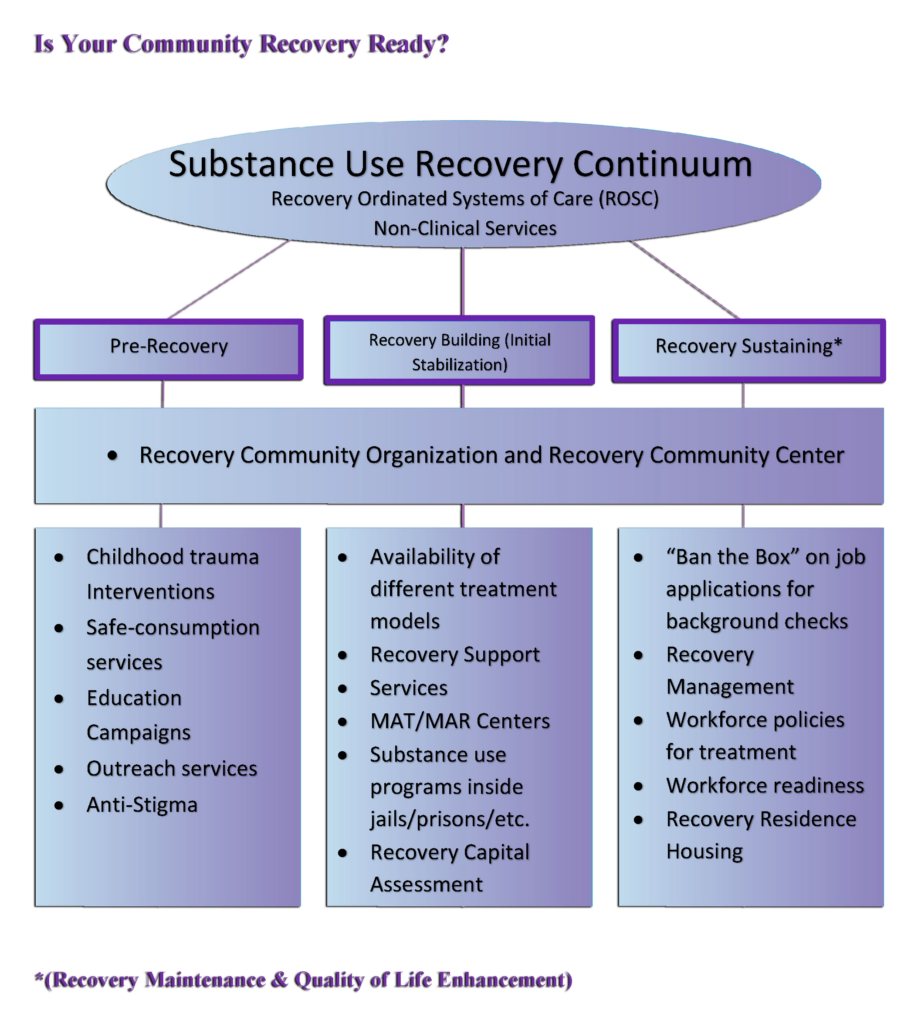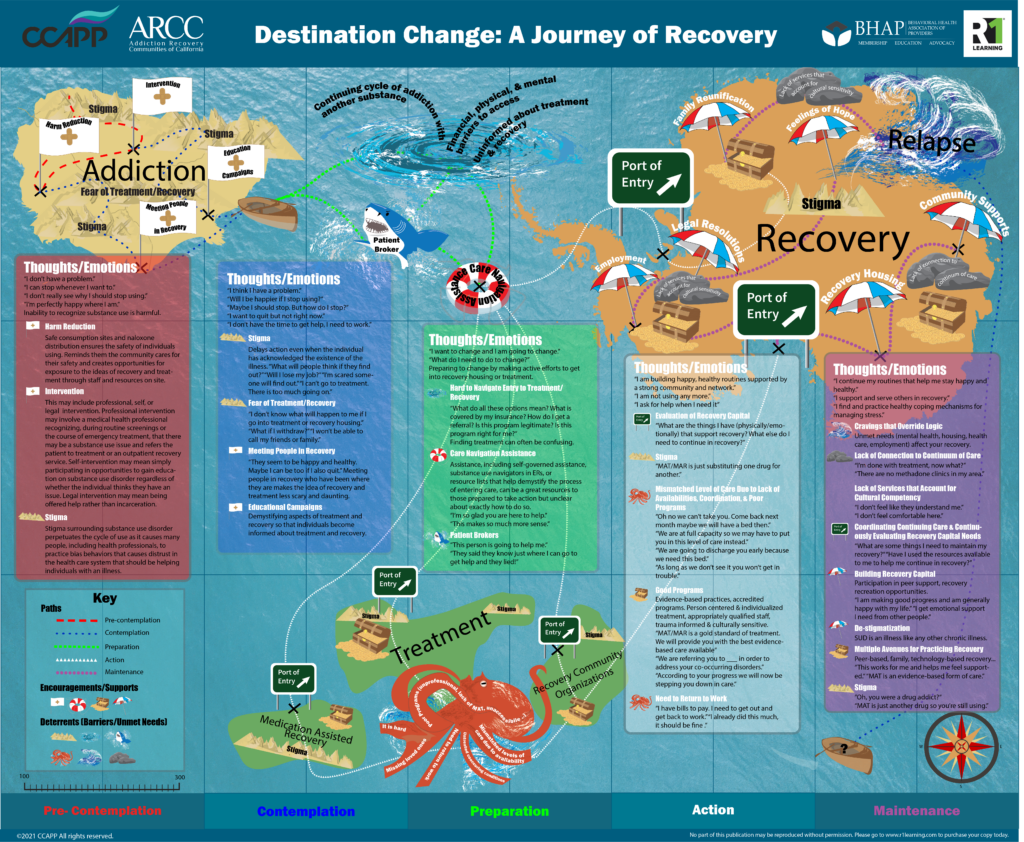What is recovery?
The most important part of the definition of recovery is the fact that it means having a sense of well-being, a high quality of life, and some sort of community engagement or sense of citizenship and some kind of sobriety. Whatever your definition for recovery is the point is that recovery is an experience and an improved life not a goal. Recovery is living a life based on principles such as hope, choice, freedom and aspirations. Recovery is a process not a state of being or end goal. Recovery is an ongoing journey to improve the state of your life.
SAMHSA States: Recovery is a process of change through which people improve their health and wellness, live self-directed lives, and strive to reach their full potential. There are four major dimensions that support recovery:
- Health—overcoming or managing one’s disease(s) or symptoms and making informed, healthy choices that support physical and emotional well-being.
- Home—having a stable and safe place to live.
- Purpose—conducting meaningful daily activities and having the independence, income, and resources to participate in society.
- Community—having relationships and social networks that provide support, friendship, love, and hope.
Hope, the belief that these challenges and conditions can be overcome, is the foundation of recovery. The process of recovery is highly personal and occurs via many pathways. Recovery is characterized by continual growth and improvement in one’s health and wellness that may involve setbacks. Because setbacks are a natural part of life, resilience becomes a key component of recovery.
The process of recovery is supported through relationships and social networks. This often involves family members who become the champions of their loved one’s recovery. Families of people in recovery may experience adversities that lead to increased family stress, guilt, shame, anger, fear, anxiety, loss, grief, and isolation. The concept of resilience in recovery is also vital for family members who need access to intentional supports that promote their health and well-being. The support of peers and friends is also crucial in engaging and supporting individuals in recovery.
Recovery services and supports must be flexible. What may work for adults may be very different for youth or older adults. For example, the nature of social supports, peer mentors, and recovery coaching for adolescents is different than for adults and older adults. Supporting recovery requires that mental health and addiction services:
- Be responsive and respectful to the health beliefs, practices, and cultural and linguistic needs of diverse people and groups.
- Actively address diversity in the delivery of services.
- Seek to reduce health disparities in access and outcomes.
SAMHSA established recovery support systems to promote partnering with people in recovery from mental and substance use disorders and their family members to guide the behavioral health system and promote individual, program, and system-level approaches that foster health and resilience (including helping individuals with behavioral health needs be well, manage symptoms, and achieve and maintain abstinence); increase housing to support recovery; reduce barriers to employment, education, and other life goals; and secure necessary social supports in their chosen community.
SAMHSA demonstrates that behavioral health is essential to health, prevention works, treatment is effective, and people recover from mental and/or substance use disorders.

Related Links
What is recovery capital?
Recovery capital is the sum amount of resources that are necessary to begin and stay in recovery from addiction and alcoholism.
So recovery capital is the sum of resources that help to start the journey or process of recovery. Resources that are a part of recovery capital can include parents, families, partners, friends, and neighbors. It also can refer to the person’s willingness to be sober, their commitment to their community, and the amount they engage and participate in value systems.
There are four parts of recovery capital; social capital, physical capital, human capital and cultural capital.
- Social recovery capital is the sum of resources a person has due to their relationships with other people. This could mean support from and commitments to groups of people. Family membership, friendships, commitments and obligations to 12 step meetings etc.
- Physical recovery capital is the resources that are tangible. For instance, physical recovery capital would be property or money that increases the options in recovery for this person. An example would be being able to afford to move to a different location or afford a better treatment center.
- Human recovery capital is resources such as skills, health, aspirations, hopes and personal resources that can help someone prosper. Things such as the amount of an education a person has and how intelligent they are. The reason this is a part of recovery capital is because these things can help with some of the solution based parts of recovery.
- Cultural recovery capital includes a person’s beliefs, attitudes, and values that tie them to social conformity and their ability to fit into dominant social behaviors.
In order to assess or see how much recovery capital a person has the focus is on the enmeshment of social, human and cultural recovery capital.
How much recovery capital a person has can determine how easy or how hard of a time they may have getting going on the journey into recovery. This does not mean that someone who has less recovery capital can’t get sober it just means they will have to build more recovery capital for themselves over time. Everyone through their journey in recovery builds more and more recovery capital whether they begin with none at all or only a little. It is possible for everyone to have enough recovery capital to begin recovering and stay recovered.
The current concept of multiple-pathways to recovery. Thirty years ago the 12-Step path was arguably the only “true” method of committing to recovery – pretty much the “only game in town.” Today there are a multitude of choices; Life Ring, Smart Recovery, Buddhist Recovery Network, Celebrate Recovery, AA Agnostics, and Addictions Victorious, have become popular alternatives or augmentations to the traditional 12-Step approaches.
These are all pathways, but recovery is more than a pathway; it is a lifestyle and a mindset.
The SAMHSA definition of recovery depicts recovery as more than a pre-prescribed path, but rather a rich, complex, and interactive process with facets that reach well beyond the individual’s need to understand the illness and its personal consequences. Achieving rewarding recovery is not about whether one goes to Alcoholics Anonymous or Smart Recovery; it is whether one continues to grow and to improve one’s health and wellness. It involves choice and problem solving, not adherence and thoughtless repetition. I look at recovery as changing one’s basic thought behavior, actions, and attitudes. For some, mutual help meetings can be a cornerstone of this process and for others it may not.
What must be a part of this process, regardless of the individual or stage of recovery, is a choice in “designing” one’s own recovery. The process of designing one’s recovery is described by a term which we have come to know as “Freestyle Recovery.” Bob.O originally coined it 15 years ago. Designing one’s own recovery (Freestyle Recovery) is now possible with the emergence of “Recovery Capital.”
In their first article, Recovery Movement, David Best and Alexandre Laudet seek to define “recovery capital” as the sum of resources necessary to initiate and sustain recovery from substance misuse. These resources include support from parents and family, partners, friends and neighbors; but also key are the individual’s engagement with, commitment to and participation in the community and its values. This means that the individual gets to contribute in ways that add value and take away things that do not. This type of frees choice is rooted the individuals’’ right to self-determination in their own recovery, as opposed to having it pre-prescribed or predetermined.
In the article, The Potential of Recovery Capital, Best and Laudet further describe the concept of recovery capital as contagious – in a good way. “There is also the recognition that recovery is something that is grounded in the community and that it is a transition that can occur without professional input, and where professional input is involved, the extent of its role is far from clear. We are also increasingly confident that recovery is contagious and that it is a powerful force not only in transforming the lives of individuals blighted by addiction but in impacting on their families and communities as well.”
As people in recovery navigate the challenges of life presents, they are also being presented to us for retrospection, critical evaluation, and possible shifts to the dominant recovery paradigm. At no time in our history as a recovering people, have we been more encouraged and free to make recovery what we make it. This is what the spirt of Freestyle Recovery is all about.
Substance Use Recovery Map

Click here to download the Substance Use Recovery Map
Click here to buy the Substance Use Recovery Map
Click here for more information on the Substance Use Recovery Map

